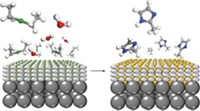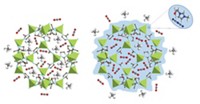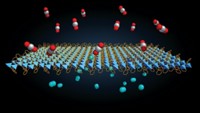Advertisement
Grab your lab coat. Let's get started
Welcome!
Welcome!
Create an account below to get 6 C&EN articles per month, receive newsletters and more - all free.
It seems this is your first time logging in online. Please enter the following information to continue.
As an ACS member you automatically get access to this site. All we need is few more details to create your reading experience.
Not you? Sign in with a different account.
Not you? Sign in with a different account.
ERROR 1
ERROR 1
ERROR 2
ERROR 2
ERROR 2
ERROR 2
ERROR 2
Password and Confirm password must match.
If you have an ACS member number, please enter it here so we can link this account to your membership. (optional)
ERROR 2
ACS values your privacy. By submitting your information, you are gaining access to C&EN and subscribing to our weekly newsletter. We use the information you provide to make your reading experience better, and we will never sell your data to third party members.
Materials
Porous Polymer Captures CO2
Materials: Tetrazole groups in new material selectively snag greenhouse gas
by Mitch Jacoby
May 9, 2011
| A version of this story appeared in
Volume 89, Issue 19

Membranes made from a porous organic polymer featuring a nitrogen heterocycle, tetrazole, exhibit exceptional gas permeability and carbon dioxide separation and uptake properties, according to a team of researchers (Nat. Mater., DOI: 10.1038/nmat2989). The study may advance efforts to develop low-cost and energy-efficient methods to capture CO2 and other greenhouse gases (C&EN, May 2, page 30).
So far, the most developed method to capture CO2 from power plant flue gas relies on aqueous solutions of amines, which react readily with CO2. But the high-temperature regeneration step saps a large fraction of the plant’s energy output.
Researchers are therefore studying other types of nitrogen-containing CO2-capture materials including microporous polymers, which can be processed conveniently via standard solution-phase methods and have unusually high surface areas.
A key challenge is designing a material that captures CO2 with high selectivity and yet allows it to permeate the membrane easily. Most membranes are hampered by a trade-off between those properties. The top-performing porous polymers reported until now are characterized by a CO2/N2 selectivity of roughly 20 and a CO2 permeability of roughly 1,000 Barrer.
Now, Naiying Du and Michael D. Guiver at the Canadian National Research Council in Ottawa, Ontario; Ho Bum Park of Hanyang University, Seoul; and coworkers have come up with a class of novel membrane materials with a CO2/N2 selectivity of roughly 30 and a CO2 permeability greater than 2,000 Barrer.
To produce the new polymer, which features pendant tetrazole groups with high affinity for CO2, the team reacted a polymer containing aromatic nitrile groups with an azide compound via cycloaddition chemistry.
The group’s data show that CO2 molecules adsorb strongly to the polymer’s micropores, thereby blocking adsorption and transport of nitrogen, says membrane specialist Neil B. McKeown, a chemistry professor at Cardiff University in Wales. Nitrogen can then be vented through another flue channel.





Join the conversation
Contact the reporter
Submit a Letter to the Editor for publication
Engage with us on Twitter